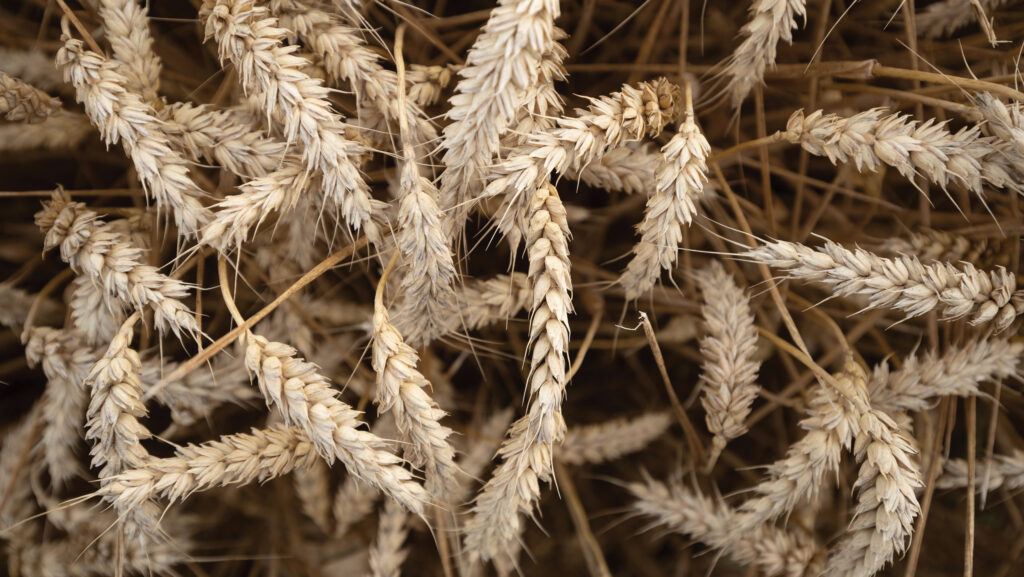Why gene editing could help growers practising regen ag
 © Tim Scrivener
© Tim Scrivener Gene editing could help speed the widespread adoption of regenerative farming practices through introducing desirable traits into crop plants faster.
This is according to Prof Giles Oldroyd, director of the Crop Science Centre at the University of Cambridge.
He was speaking on a panel about the potential risks and rewards of gene editing for sustainable food and farming at Groundswell.
Giles highlighted that current breeding was targeted for high input farming and meant that the traits suited and required within a regenerative system were often completely absent currently.
See also: Why growing milling wheat is reducing risk for Sentry
“We need to adapt our crop plants to a regen farming system to maximise performance,” he said.
“Currently, regen farmers have a choice of either growing a generally underperforming heirloom variety like spelt – which was last genetically improved in the early 1900s – or use a Green Revolution variety that’s bred for highly intensive agriculture.”
An example of the type of trait that was required within regen systems is mycorrhizal associations, he suggested.
This is where plant roots are colonised extensively by beneficial fungi.
“These plant-microbial associations grow deeply into and explore the soil in a complex way, providing an amazing capacity to capture nutrients like phosphates, nitrates and micronutrients, delivering them to crops.”
He said that was incredibly useful in a regen farming system, but not really needed in conventional systems where nutrients were added to the soil surface, allowing relatively shallow rooted systems.
Mycorrhizal fungi
“Regen farmers are intentionally farming for mycorrhizal fungi, but the crop plants we’re using have not been bred to optimise this trait.”
He presented data for 200 varieties of rice – saying the same would be true of wheat – which quantified the benefit of growing each variety in the presence of mycorrhizal fungi.
“For some varieties, you get a penalty of up to 50% reduction in shoot dry weight when they are colonised by mycorrhizal fungi.
“For others, you can have up to a 200% improvement.
“This genetic variation is happening in all our crop plants.
“So for a regen farmer who is actually farming with the intention of [encouraging colonisation by] mycorrhizal fungi, they could be unintentionally planting a variety of wheat that actually has a penalty for mycorrhizal fungi [colonisation].
“This example shows there are critical traits for regen farming that we’ve had a complete blind spot in our plant breeding for the past 100 years.
“We need to bring these traits very rapidly into our farming systems.”
Gene editing could play a huge role in helping achieve that aim, he said.
“Gene editing is an extraordinarily valuable and revolutionary technology and I think we would be foolhardy as a community if, out of fear, we say this technology should not be used to genetically improve crops for regen farming purposes.
“If we can’t use gene editing, you tie our hands so tightly we will be waiting another 100 years for the correct genetics for regen farming.”
Crop funding
Giles also called for more public investment in developing crops for sustainable systems.
“We have a market failure currently,” he said. “We have an agricultural sector that is focused entirely on high-input systems and developing crops for those systems with a juggernaut of public and private funding supporting it.
“Yet there is a desire from government and society to shift to something more sustainable.
“But currently regen farmers do not have sufficient buying power to persuade companies like Syngenta or BASF to make products for them because the majority of farmers are using the high chemical input system, so we have a market failure where the transition is not there.
“My view is we should be seeing a lot more public investment to recognise that market failure to facilitate the development of crops for regen farming and more sustainable farming systems.” he said.
Use gene editing to improve human health, farmer says

George Young © MAG/Colin Miller
While arable-turned-livestock agroecological farmer George Young was somewhat supportive of using gene editing for the purposes Giles explained, he was concerned that, in most explanations of the benefits of gene editing, the focus was on things like improving disease resistance or mining fertility from soils.
“The problem is if we use these plants, we’re enabling the status quo to continue,” he said.
“We’re enabling the same style of agricultural system the Green Revolution started and tying ourselves quite often to other companies to buy stuff.
“My biggest fear is we will not focus on the fact that there are agronomic ways to fix what we’re doing now.”
He would prefer gene editing, if it is used at all, to help improve human health.
“Look at the food system and the entrenched costs and health implications. We have an unhealthy society, and our NHS is in a pickle.
“We know gene editing could be used to make healthier crops.
“But unfortunately gene editing won’t just be used in a good way like Giles describes, it will also be used in a way that continues to proliferate poor health,” he said.
“What I am most worried about is not the fear of gene editing, but the fear of not having the impetus we currently have with a broken cropping system, which will help us fix a broken food system.
“If we’re not careful, gene editing will help fix our broken cropping system and enable our poor food system to continue.”
